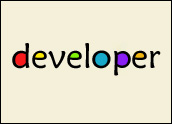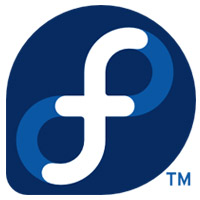
GroundWork Open Source develops open source systems and network management software. The company melds together over 180 open source projects, including Cacti, Ganglia, NeDi and Nagios, into a comprehensive, fully supported IT infrastructure and networking monitoring solution.
Datacenters want to get business-critical functionality at the lowest possible cost. This is one of the reasons that open source solutions as network monitoring and management tools are starting to challenge the “Big Four” (Tivoli, Openview, Patrol and Unicenter) proprietary approaches.
Another reason for datacenters’ interest in open source software is the flexibility these applications provide small business and enterprise-level companies to avoid the feature “bloat” of the proprietary solutions.
Why start a business with open source? “Being cash-poor as a startup,” Tony Barbagallo, vice president of products at GroundWork Open Source, told LinuxInsider. “We saw how immature many of these monitoring and management projects were and realized that it was quicker and cheaper for us to develop products with open source.”
LinuxInsider recently discussed with Barbagallo how his company sees its role in the world of open source services.
LinuxInsider: How is open source able to compete with the Big Four proprietary approaches?
Tony Barbagallo:
The need for enterprise-class IT management solutions is more acute than ever. Open source has given today’s IT teams a dramatically expanded set of options to meet this critical need. Open source systems and network management solutions have matured to a level of robust functionality and reliability. This gives IT decision makers the opportunity to avoid the bitter pill of high cost, slow deployment and complex management which typically comes with a proprietary solution. This extends to mid-sized business solutions that were once out of their reach.
The Big Four proprietary solutions are often too expensive for all but the largest of enterprises. They have features that mid-sized businesses will never need to use, and they have boundaries that are inflexible. Instead of providing a solution that changes with the needs of the company’s IT infrastructure, the proprietary vendors provide an oversized solution that companies cannot use until they expand.
LI: What else makes open source attractive to smaller companies?
Barbagallo:
Besides being more affordable, open source offers flexibility that is critical for businesses that have a growing, evolving IT infrastructure.
Savvy IT teams recognize that the true performance and value of systems and network management systems is determined by their design and configuration. This explains the rapid adoption of GroundWork’s solutions, which feature flexible design and configuration options built directly into the product.
LI: What contributes to feature bloat in proprietary solutions that open source is able to avoid?
Barbagallo:
Customers of proprietary solutions are typically Fortune 500 organizations. The Big Four are motivated to keep customer satisfaction high. Accommodating feature requests of these Fortune 500 customers expands or bloats their solutions. Open source tools are typically designed to solve one problem. By taking a best-of-breed approach and integrated leading point solutions, GroundWork is able to unify these projects with an intuitive user interface and give mid-market businesses a systems and network management solution that grows with their company’s IT infrastructure.
LI: What is GroundWork’s history in working with open source?
Barbagallo:
We brought to market the first practical, enterprise-ready open source solution for systems and network administrators. We offer an enterprise-level open source solution, GroundWork Monitor Professional, and a basic solution, GroundWork Monitor Open Source, which is available free for download from our site. In addition to our products, we also support the open source community by co-sponsoring with BayLISA a monitoring special interest group, Monitoring SIG, which provides a forum for the community to discuss topics related to open source.
LI: Are there specialty products that GroundWork targets in its open source support?
Barbagallo:
GroundWork unifies proven open source projects such as Nagios, RRDtool, Nmap, Sendpage, MySQL and more. By extending these projects with an intuitive user interface, robust service level reporting, comprehensive documentation and world class support, we overcome the limitations that were stifling the widespread adoption of these innovative but disparate open source management tools — lack of integration, steep learning curves and complex user experiences.
LI: What do you see as the driving force behind the continued growth of open source management solutions for network monitoring and infrastructure control?
Barbagallo:
The US$9 billion market for IT management software has been undergoing dramatic changes, driven by two primary forces. First, basic systems and network monitoring functionality has become commoditized to the point where numerous products now reliably perform similar functions. Second, a thriving ecosystem of open source products and vendors specializing in systems and network monitoring and other IT management applications has matured rapidly. The net result is that Global 2000 and mid-sized companies now have a low-cost, open source alternative to expensive proprietary software.
LI: How critical is the cost factor to growing your business?
Barbagallo:
Obviously, the significant cost savings of open source solutions compared to proprietary tools is appealing. Most mid-market organizations can’t afford the Big Four solutions. There is also the flexibility and extensibility that allow companies to “right-size” and customize the software to fit their specific needs. Being able to do this at a low cost had been a pipe dream for mid-sized enterprises, since the proprietary solutions, which used to be the only solutions out there, cater to the largest enterprises with the deepest pockets. The availability of open source options is making this dream a reality.
LI: How does open source fair against proprietary companies that say open source management tools cannot scale or compete with their commercial counterparts?
Barbagallo:
Open source and proprietary solutions do not share the same space. Instead, we predict a “draining the cost pool” for customers and a paradigm shift in the way they view management solutions. Big fish vendors like the Big Four will be pushed down to the deep end where they can add value, while the adoption of best-of-breed open source solutions will lower the customer cost considerably.
LI: How will this impact on the cost value?
Barbagallo:
As customers realize the commoditization effect of IT infrastructure monitoring due to the economic disruption of open source alternatives, the large proprietary vendors will follow suit by focusing on the upper layers of IT operations management, where prices are protected and open source alternatives are not ready for prime time. Then open source IT infrastructure monitoring solutions can serve as feeders to the upstream proprietary solutions.
LI: Hasn’t this type of cycle been seen before in the business software space?
Barbagallo:
This “commodity layer” line of thinking has historical precedent — Apache with Web servers, JBoss with application servers, SugarCRM with CRM, MySQL for the RDBMS industry, and Linux in the datacenter. It also makes sense given the current trend in organizations to drive down infrastructure costs while focusing resources on initiatives that ultimately grow the bottom line.
LI: What factors should those consider migrating to open source tools consider?
Barbagallo:
There is the perception, and in some cases the reality, of limited or poor functionality as well as less-than-reliable documentation and support services with open source than you might get from a commercial vendor. Anyone considering a switch to or an adoption of open source tools needs to consider whether the comfort level of steering away from the perceived security of proprietary solutions.





















































